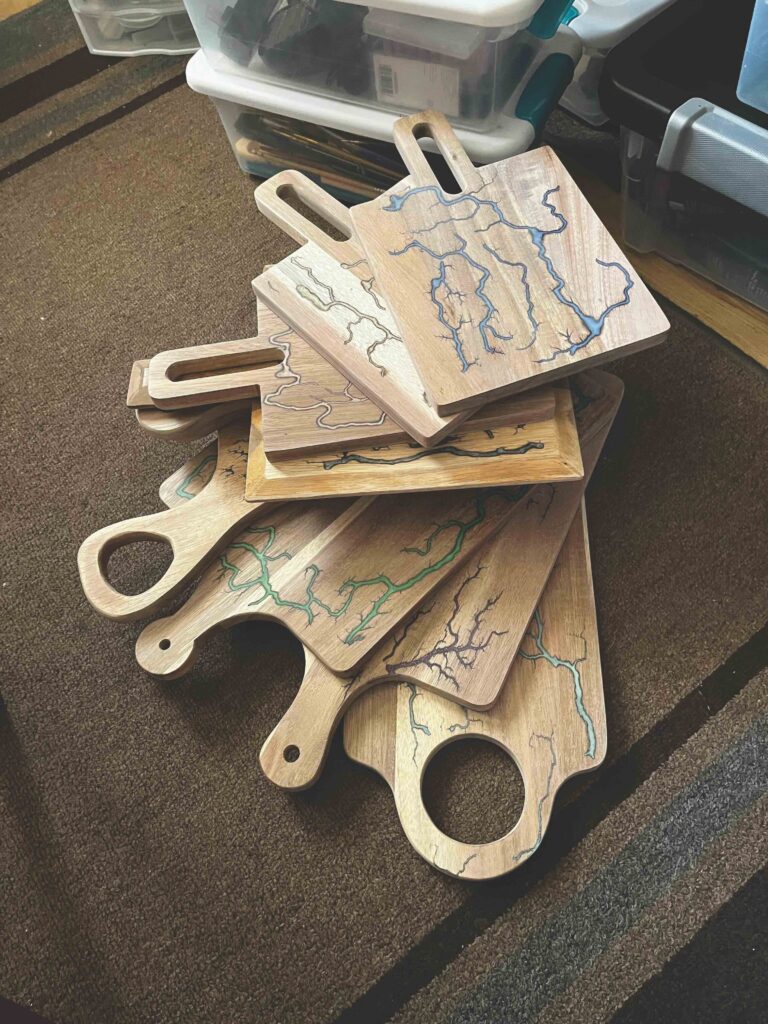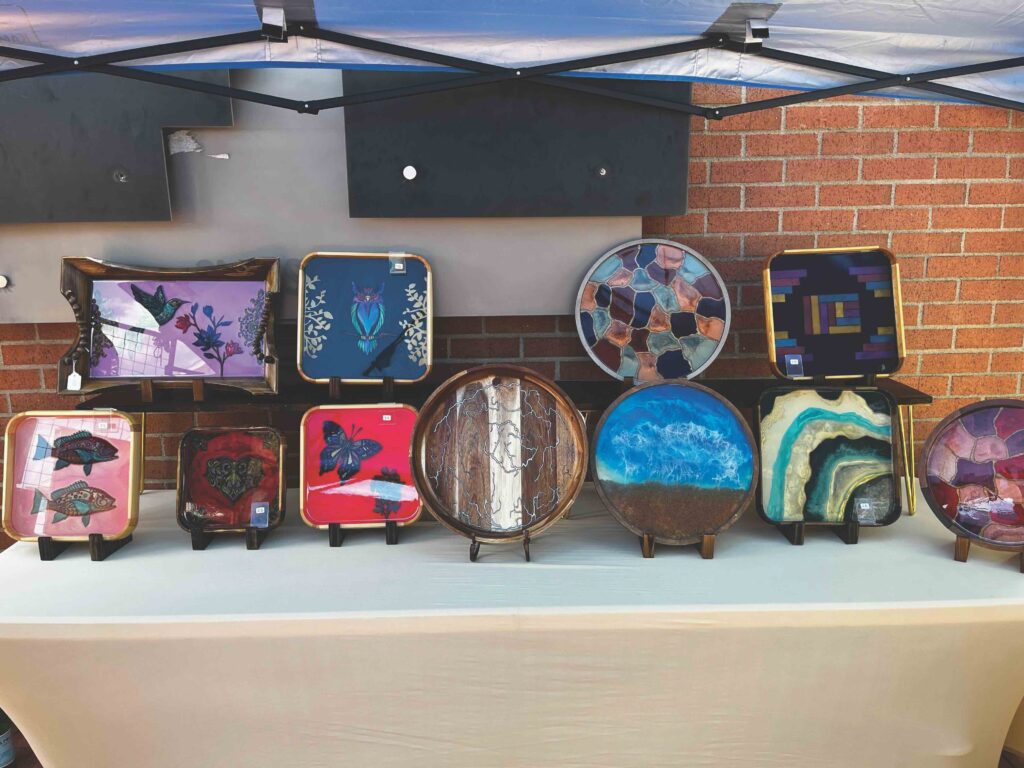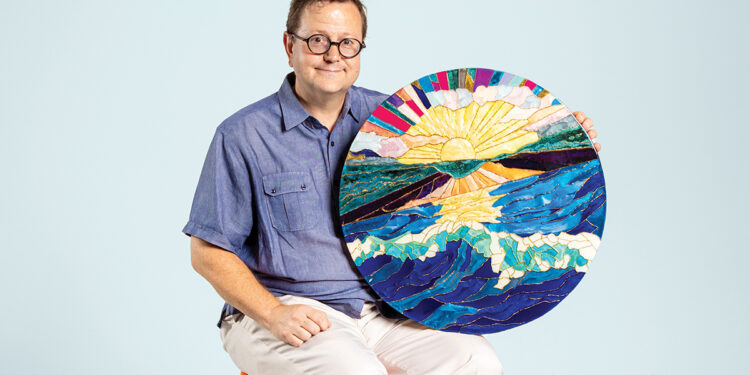Owensboro teacher turns resin into inspiration
Photo by Jamie Plain
Art isn’t just a hobby for Owensboro High School teacher Ryun Schienbein — it’s a family tradition with a modern twist. His grandfather carved stone, his great-uncle painted and designed fonts by hand, and today Schienbein carries that creative legacy forward in a different medium: resin.
“My whole family on my mother’s side has been involved in art,” Schienbein said. “My great-uncle was a graphic designer back when everything — fonts and layouts — had to be done by hand. He was also a painter. My grandfather, Don Lacy, was a stone carver whose work is in a museum. He was more of a folk artist, and that was his genre.”
Schienbein’s own path to resin art began years later, while he was living in New York. A colleague introduced him to a “river table” — a live-edge slab of wood with resin poured through the center to resemble a flowing stream. The technique sparked something new.
“I always thought that was the coolest thing,” he said. “The resin really spoke to me. I thought it was beautiful, so I just started experimenting little by little.”
While resin is often used for decorative projects, Schienbein pushes the medium into fine art, experimenting with figurative and representational themes.
“You don’t see much figurative resin art, something that represents an animal or a landscape,” he said. “There’s an enamel painting technique called cloisonné where you build little borders with wire. I borrow from that approach in some of my pieces to create representational work.”

For him, color is just as important as form.
“Resin starts as a clear liquid, like glue,” he said. “You can color it with pastes that look like acrylic paint or with mica powders, which are minerals ground into pearlescent pigment. I usually start with a color scheme — am I leaning toward cool tones or warm tones? — and build from there.”
One of his recent works, displayed in an Art Guild show, reflected that blend of imagination and experimentation.
“The river in the piece was solid white,” Schienbein said. “You might see white water in real life, but never an entire river like that, or at least I hope not. It creates something unique, a scene you’ll only see on my panel, not in nature.”
Balancing his artistic practice with teaching is a challenge, but Schienbein has found resin’s unique properties make it manageable.
“The students at OHS are always my first priority. If I need to meet them on a weekend, I will,” he said. “But resin works well with my schedule. You have about 20 minutes of working time, and then it’s finished for that day. To make a large piece might take weeks, building layer by layer.”
Schienbein believes Owensboro High School’s arts programs rival some of the best in the country.
“We have a fantastic fine arts and performing arts program,” he said. “I worked in New York City for a long time, and the facilities here are comparable to LaGuardia High School, where the movie Fame was based.”
Though he doesn’t often talk about his own art with students, he finds that his creative process helps him connect with those considering artistic paths.
“It’s useful when I’m working with kids who want to pursue art,” he said. “I want to make sure they go to a college where art can still be part of their lives, even if they’re not majoring in it.”
For Schienbein, inspiration comes less from grand themes and more from trusting the medium itself.
“When I get stuck on a piece, it’s usually because I’m trying to do too much,” he said. “I have to remind myself to let the resin do the work. It’ll move and settle into something on its own if you don’t overwork it.”

That patience also shapes his vision for the future. While he continues to create functional pieces like trays, his goal is to scale up his art.
“Every year when I do the Art Guild show, I bring a bigger piece,” he said. “And every year, when I see it on the wall, I think it looks too small. So I’m just going to keep making bigger and bigger pieces and see where that takes me.”
Even as his artwork grows in size and ambition, Schienbein insists it will remain a passion grounded in personal fulfillment.
“I don’t necessarily think of myself as an artist,” he said. “It’s just something I love to do.”
And in that balance — between resin pours and lessons at OHS — he continues to model for his students what it means to pursue creativity without limitation. OL










